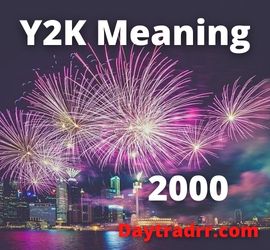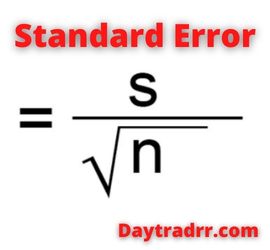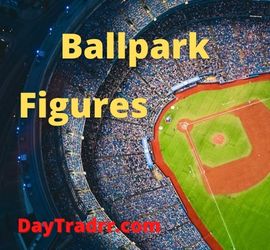What are Period Costs?

Period costs are the indirect costs of production that cannot be capitalized on a company’s balance sheet. They show on the Income Statement. Product costs and period costs are two categories of costs that a company incurs producing and selling their product or service. A period cost is any cost that does not fit into prepaid expenses, inventory, or fixed asset categories. A period cost is usually associated with a timeframe rather than with a transaction or event. In general, a period cost is captured on the income statement as an expense. As a result, it is often referred to as a period expense.
Period costs are charged to expense in the period the cost occurs. This type of cost is not included within the cost of goods sold (COGS). Instead, it is typically bundled into the selling and administrative expenses section of the income statement. Period costs are a catch-all category for the indirect costs that occur in production. Overhead and sales & marketing expenses are common examples of period costs. This is very different from Product cost. Only the direct costs and expenses directly related to the production of a product or service intended are considered a product cost.
Period Costs – A Deeper Look
Period costs are all costs not included in product costs and not directly tied to the production process. Overhead or sales, general, and administrative (SG&A) costs are considered period costs. SG&A includes costs of the corporate office, selling, marketing, and company business administration. Period costs are not assigned to one particular product or the cost of inventory like product costs. Therefore, period costs are listed as an expense on the income statement in the accounting period in which they occurred. Other examples of period costs include marketing expenses, rent (not directly tied to a production facility), office depreciation, and indirect labor. Also, interest expense on a company’s debt would be classified as a period cost.
Period Costs – Examples
Most of the administrative costs of a business can be considered period costs. For example:
- Legal and professional fees: Lawyers, accountants, and other advisors that businesses may pay for
- Office expenses: Expenses such as supplies, rent, and other office-related expenses
- Utilities: Water, electric, gas, and other utilities
- Advertising and promotion: Marketing expenses such as commercials, social media ads, and other promotional items
- Selling expenses
- Commissions
- Executive and administrative salaries and benefits
- General and administrative expenses
- Maintenance and repairs: The upkeep of the office and payments for damages on any equipment that requires repairs
- Travel, meals, and entertainment: Expenses acquired during business trips
- Salaries: The money companies pay to their employees for their work
- Employee benefits: Expenses such as retirement accounts, health insurance, and other employee benefits
- Insurance: Businesses usually have insurance costs to cover their assets
- Interest on loans and other liabilities: Many businesses must pay interest back on loans each month
- Automobile expense: Any company vehicles that are not related to manufacturing or delivery of products
- Depreciation expense
Product Costs – A Deeper Look
Product costs are the direct costs involved in producing a product. For example, a manufacturer would almost always include direct labor and raw materials. But, other costs include manufacturing supplies and overhead that is directly tied to the production facility. For example, water and electricity.
The product costs include the supplies purchased from a supplier. Also, any other costs involved in bringing the finished goods to market. In general, all costs that occur in the process of acquiring or manufacturing a product are considered product costs. Product costs are often treated as inventory because these costs are used to value the inventory. When products are sold, the product costs become part of the costs of goods sold. This lump expense is captured in the income statement.
Product cost examples
Product costs are the costs incurred during the manufacturing process. These are the costs and expenses that are directly related to production. For example:
- Direct labor cost: Direct labor is wages and benefits paid to an employee who is directly involved in the production process. Assembly line workers, painters, welders, and other line workers would all be considered direct labor.
- Direct materials cost: Direct materials are the raw materials that are required to manufacture a product. For example, rocking chairs require wood to purchase to assemble the finished chairs. Wood is considered a direct material cost. If the chairs are made of synthetics, the synthetic material is a direct material cost.
- Direct supplies cost: Wood or synthetic materials are not enough to manufacture a rocking chair. You’ll also have to purchase additional items such as glue, nails, screws, paint, and varnish. These are all necessary in order to produce the rocking chair. Therefore, they’re considered direct supplies and are always included in product costs.
- Factory overhead: Sometimes, a production facility is located in a different location than the administrative headquarters. In that case, the cost of maintaining that separate facility should be included in product costs. These costs include rent or mortgage payment, security used to guard the facility, and even utilities such as gas and electricity. If the manufacturing facility and the administrative building are under one roof, each must be accounted for. The accounting department needs to allocate the portion of overhead cost for manufacturing separate from other functions under the same roof.
Period Costs vs Production Costs – Impact on Financials
Both the product costs and the period costs can be either fixed or variable. Production costs are usually part of variable business costs as the amount spent varies in proportion to the amount produced. However, the costs for machines and assembly rooms are likely to be a fixed proportion. However, specific allocations can be shown under a fixed cost heading. Or, recorded as depreciation in a separate accounting sheet. Therefore, the person creating the production cost calculation has decisions to make. Whether certain costs are already accounted for or if they should be a part of the calculation for production costs. In addition, fixed and variable costs can be calculated differently at different stages of a company’s accounting cycle or fiscal year. Whether the calculation is intended for forecasts or reports also affects the choices and methods used.
There is no standard approach or formula that companies and accountants use to calculate period costs. But, accountants still need to carefully consider and properly allocate a company’s expenses. How a company determines what is the period cost and what is the cost of production will affect other accounts and schedules. For example, once totals are on the income statement, analysts deduct them from gross profit to determine net income for the period.
Up Next: What Is Principal Curtailment?
 Principal curtailment for a mortgage or loan refers to making extra payments or paying periodic lump sums towards debt to pay it off faster. The additional payments are applied to the principal balance on the loan. The more extra payments you make, the faster the principal balance on the mortgage reduces. This helps you save a lot of money in interest payments over the life of the loan.
Principal curtailment for a mortgage or loan refers to making extra payments or paying periodic lump sums towards debt to pay it off faster. The additional payments are applied to the principal balance on the loan. The more extra payments you make, the faster the principal balance on the mortgage reduces. This helps you save a lot of money in interest payments over the life of the loan.
In general, curtailment means to restrict or reduce something, to cut it short, or to finish early. The word can be seen in business announcements where curtailment where a restriction is imposed on any activity. This restriction can be temporary or permanent. The word is often used to describe reductions in production and limits on energy output or delivery.
However, principal curtailment has a slightly different meaning in the mortgage industry. A mortgage loan may be satisfied by curtailment when the homeowner pays off the balance ahead of schedule. Borrowers can make an extra payment against the principal amount owed in order to reduce the outstanding balance. This is called a partial curtailment. A total mortgage curtailment occurs when the balance of the loan is paid off with a lump sum ahead of schedule.




